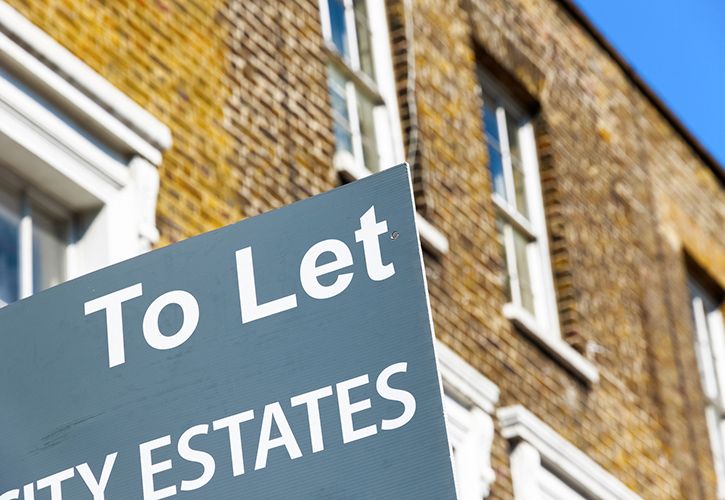UK DIY News
Nearly 3m Rental Properties Need Work To Meet 2030 EPC Standards

- An estimated 2.9 million properties need to be improved under the government’s proposal for rental homes to reach a minimum EPC rating of C by 2030, costing £23.4 billion – an average of £8,074 per property
- The new analysis, revealed today in Rightmove’s third Greener Homes Report, also found:
- Half (50%) of landlords say they are concerned about potential financial penalties if rental properties fail to meet EPC C standards by 2030
- A green wealth divide has emerged – analysing EPCs created over the past year found 50% of £1 million plus properties had significantly improved their rating since their previous EPC, compared with only 32% of properties worth under £400,000
- The majority (72%) of people would be willing to change how and when they use energy if it meant they could access cheaper energy rates at different times of the day
- Ahead of the Autumn Budget, Rightmove is asking the government to consider support for landlords which in turn will benefit tenants, and more mass market help for home-owners of lower value homes
A new report from the UK’s largest property website Rightmove reveals new insight into the scale of the challenge in improving the energy efficiency of homes across Great Britain.
Energy efficiency in the rental market
A combination of Rightmove’s whole-of-market data and government data estimates that 2.9 million properties need to be improved to reach an EPC C rating, at a cost of £23.4 billion – around £8,074 per property for a landlord.
The government’s proposed minimum EPC requirement for all rental properties by 2030 is now back on the table after a similar proposal was scrapped by the previous government.
Without financial help to accelerate the upgrades, the move could reduce the availability of rental properties in the market if some landlords choose to sell up rather than make the changes.
The latest real-time market data from Rightmove reveals that the proportion of former rental properties moving into the sales market is already at its highest point on record, suggesting more landlords are selling up. 18% of properties for sale in August were previously on the rental market, compared with 8% in 2010.
Rightmove also surveyed over 14,000 home-owners and renters, along with over 1,000 landlords for the report.
The survey found that while half (50%) of landlords are concerned that the government will introduce costly charges for not meeting EPC requirements, one in five (19%) renters think stricter energy efficiency regulations should be the top priority for the new government.
A green wealth divide emerging
Higher value property owners are making green upgrades at a much faster pace than those in the mass market.
Analysis of EPCs that were created over the past year found that 50% of £1 million plus properties had significantly improved their rating since their previous EPC. This compares with only 32% of properties worth under £400,000.
With 64% of properties listed for sale on Rightmove priced below £400,000, the trend shows that the mass market needs more help to make green upgrades.
Energy bills remain biggest motivator
With the recent energy price cap rise, household bills are expected to increase by 10% on average this winter, making energy-efficient homes ever more crucial as people strive to cut living costs.
92% of renters say it is crucial to understand the energy efficiency of their home, compared to 87% of homeowners, showing the growing importance of increasing costs and energy bills in rental properties.
There is also a willingness from people to change their behaviour. The majority (72%) of people would be willing to change how and when they use energy if it meant they could access cheaper energy rates at different times of the day.
Rightmove’s Energy Bills Tracker shows that the difference in bills between homes with higher and lower energy efficiency ratings can be significant.
The average energy bill for a three-bedroom semi-detached house with an EPC rating of F stands at £4,312 per year, compared with £1,681 for the same house with an EPC rating of C – a difference of £2,631.
New government
Labour’s Warmer Homes plan proposes to invest £6.6 billion to upgrade homes with better insulation and low-carbon heating like heat pumps, an encouraging ambition to improve Great Britain’s homes.
While any new policies or schemes would need to be carefully thought through, there are a few things that the government could consider to help to make homes greener:
- Design a package of support for home-owners and landlords across the mass market (properties under £400,000) to make green upgrades, through grants or low-interest, long-term loans:
- One potential consideration could be to allow landlords to offset the costs of energy efficiency improvements against income tax in the year the costs are incurred rather than against capital gains tax when the property is sold
- Introduce stamp duty rebates if a new buyer makes green improvements in the first few years of purchase. We suggested this change last year and still think it could be successful in helping motivate people to make changes
- Encourage mortgage lenders to continue investing in innovation in the green mortgages space, so that new products and awareness of them generates wider mass appeal
Tim Bannister, Rightmove’s Director of Property Science, says: “It’s clear from our analysis that more needs to be done to help the mass market transition to greener homes, especially those living in homes worth under £400,000.
“In the rental market, through discussions with agents and our research, we know landlords want to provide comfortable, energy-efficient homes, but green upgrades can be costly. For landlords of lower-value properties, the financial returns may not always justify the investment.
“Now that the government has confirmed there will be a consultation on raising the minimum energy efficiency standards in rental homes, we look forward to seeing much needed clarity, and ideally support, for landlords, which in turn should benefit tenants over the medium to long term.”
Johan Svanstrom, Rightmove’s CEO, adds: “Our Greener Homes Report this year highlights the barriers that remain in the journey to greener homes, from the financial challenges, to the need for clearer guidance on what support is available. It’s clear to us that consumers’ interest in greener options continue to steadily rise.
“At Rightmove, we’ve been increasing our efforts to better educate homeowners, renters, and landlords about the cost and environmental benefits of more energy-efficient homes. By leveraging our extensive data, covering the entire property market across Great Britain, we will continue to support people in making more informed choices and equip the industry with the latest insights into home-mover behaviour.”
Rightmove’s Greener Homes report is available now, which also includes:
- A regional view of stock by EPC ratings and the improvements versus 2019
- Improvements since 2019 of the annual CO2 emissions that homes produce
- New build development progress and the latest innovations
- The most common green improvements that homeowners have made
For a full copy of the report please you can view and download here: https://www.rightmove.co.uk/guides/energy-efficiency/rightmove-greener-homes-report-2024/
Source : Rightmove
Image : VictorHuang / iStockphoto / 672126760
Insight DIY always publishes the latest news stories before anyone else and we find it to be an invaluable source of customer and market information.











































